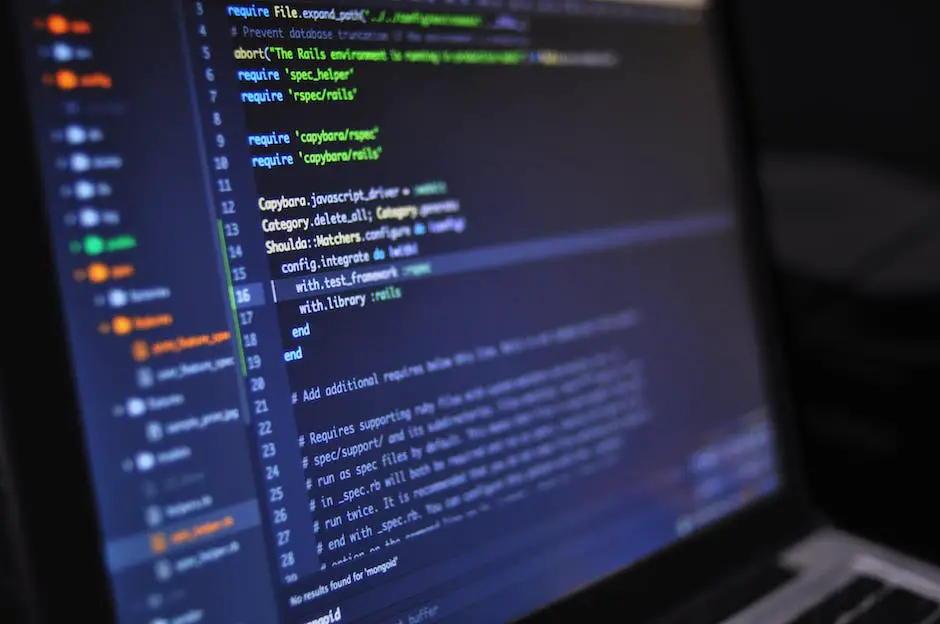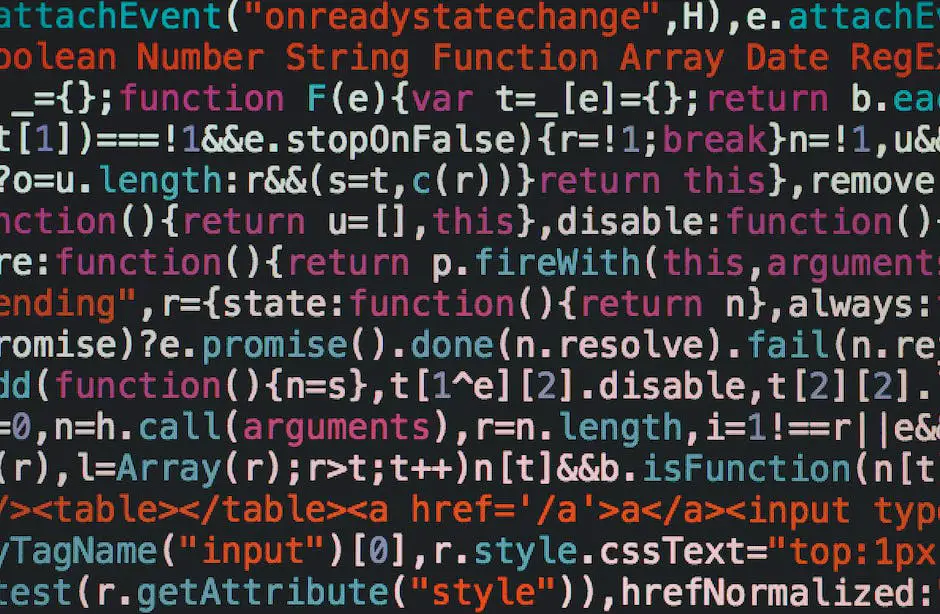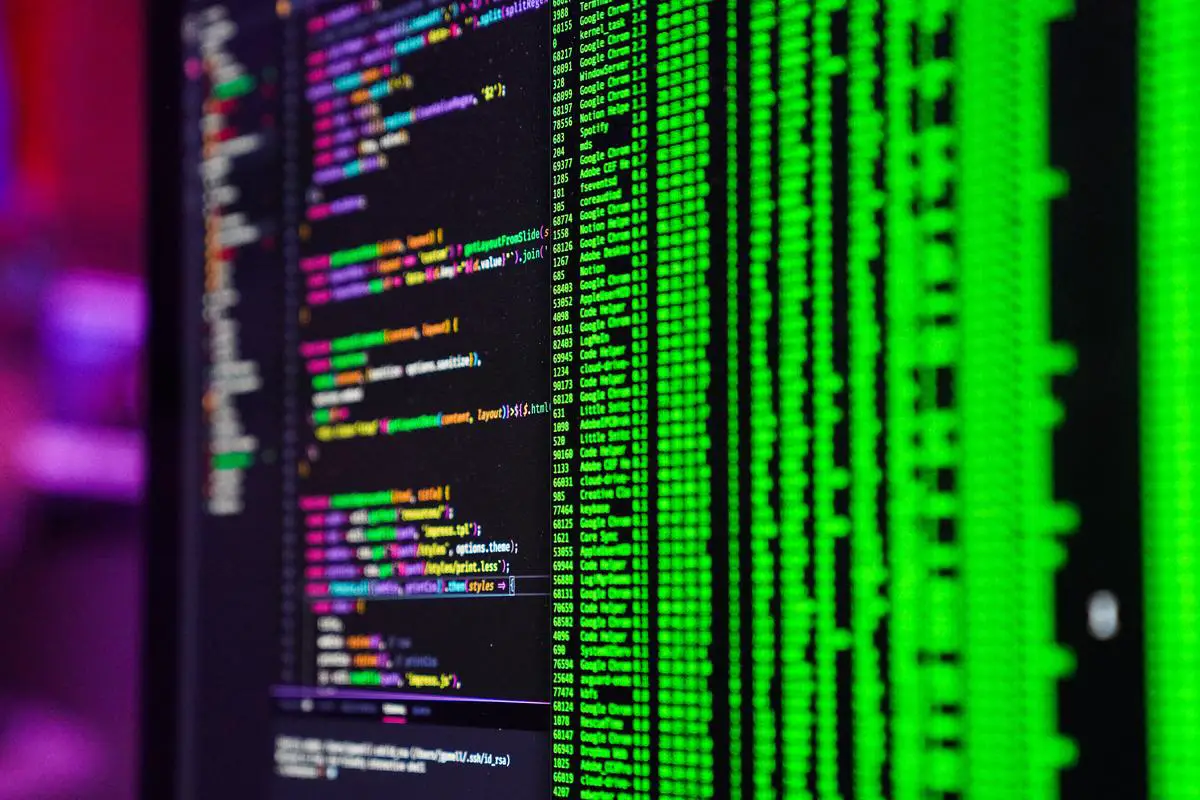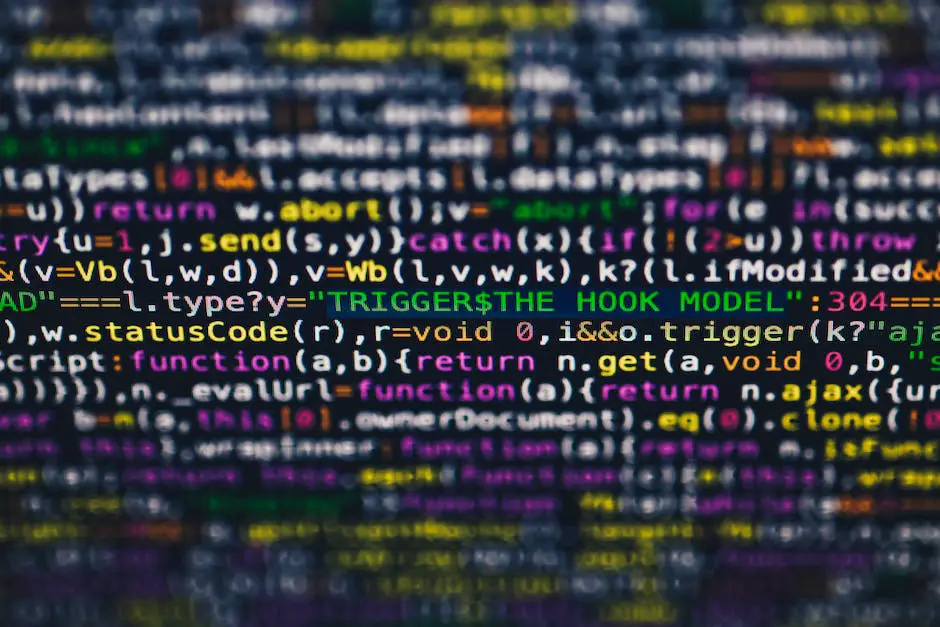Revolutionizing the era of digital transformation, Artificial Intelligence (AI) has continued to widen its impact across various sectors, rendering traditional practices obsolete. One such area experiencing AI’s profound influence is code translation – a critical component for many businesses and technology firms. From deciphering legacy systems to ensuring compatibility across multi-lingual platforms, code translation stands pivotal. However, with the advent of AI, this task is shifting from manual perplexity to automated simplicity. This exploration delves into understanding the intricate concept of code translation, its necessities, types, and the overarching process, followed by a deep dive into the pivotal role AI plays in enhancing the efficiency of code translation. Furthermore, while reflecting upon the challenges faced in automating code translation using AI and the potential strategies to mitigate these issues, it also highlights real use-cases of AI enabled code translation and projects insights on where the future stands for AI in the realm of code translation.
Understanding Code Translation
Understanding Code Translation in AI
Code translation refers to the process of converting one programming language (source code) into another (target code). For an AI system to accomplish this, it needs to comprehend the semantics of the source code and subsequently generate corresponding code in the target language. This process involves program synthesis, code migration, and many other tasks requiring advanced computational abilities.
The Need for Automated Code Translation
The need for automated code translation arises primarily from the desire to make software development more efficient, to make old or outdated code compatible with newer systems, and to enhance interoperability between different programming languages. Automating this process with artificial intelligence can significantly free up resources, streamline workflows, and improve scalability as it reduces the need for human involvement, thereby eliminating potential errors.
Code Translation Process
Typically, AI systems automate code translation through a series of steps. It begins with tokenization, where the source code is broken down into tokens. Next, the tokens are parsed to build an Abstract Syntax Tree (AST), which represents the grammatical structure of the code. Following this, the system carries out semantic analysis to understand the code’s meaning. The system then converts the understood semantics into the AST of the target language. Lastly, the AST is printed into the target code.
Types of Code Translation
There are two primary types of code translation – manual and automatic. Manual code translation is a costly, error-prone, and time-consuming task that necessitates a proficient understanding of both source and target languages. Automatic Code Translation (ACT), supported by AI, offers a promising solution to these challenges, undertaking the task of code translation rapidly with greater accuracy.
Levels of Code Translation
Code translation also involves various levels, such as syntactic and semantic translation. Syntactic translation involves changing the syntax of the source code to match the target language’s syntax rules, while the semantic translation involves translating the source code in a way that its behavior is the same in the target code.
Demystifying AI-Driven Code Translation
AI-infused tools such as neural machine translation models are game-changers in the field of code translation. These models are usually made robust by training them on a parallel compilation of source code and its translated version. Once well-trained, these AI models can autonomously translate new source code into the destination language. Nonetheless, the capabilities of AI in code translation, though impressive, do not negate the need for manual translation in handling intricate code translation assignments.

The Role of AI in Code Translation
Unveiling the Impact of AI on Code Translation
The advent of Artificial Intelligence (AI) has ushered in drastic improvements in coding and programming, particularly in the realm of code translation. AI enables developers to program computers to grasp and translate code from one programming language to another automatically, bypassing manual recoding.
The relevance of code translation in the software development life cycle is paramount as it aids the migration from older systems to newer ones, alters existing apps to function on diverse platforms, or navigates between different coding languages to meet varied project needs. This used to be a manual process that was not only tedious but also susceptible to errors.
AI Models and Algorithms for Code Translation
With AI, code translation can be performed seamlessly using machine learning models, neural networks, and algorithms. An excellent example of this is neural machine translation models. These models are trained on large datasets of code in multiple languages, allowing them to learn the patterns and rules of each. Once trained, these models can translate the code from one language to another with superior accuracy and speed.
Another AI-based tool used in code translation is the Transformer model. It’s known for its ability to handle long sequences of data, which is essential for complicated code structures. The Transformer model’s ability to maintain contextual information also makes it a robust tool for maintaining the original code’s logic during translation.
Improving Efficiency and Accuracy with AI
AI brings remarkable improvements in code translation’s speed and accuracy. Its ability to learn from, remember, and apply complex coding rules, drastically reduces the time taken to translate code—what might take a human programmer hours to do, an AI-powered tool can accomplish in mere minutes.
Furthermore, AI also significantly improves the accuracy of code translation. As opposed to human programmers who might make mistakes during the process, AI models follow precise algorithms and strict coding rules, delivering highly accurate translations.
AI can also play a pivotal role in identifying and fixing bugs in the code. It assesses the code in depth, learns the patterns, identifies anomalies or mistakes, and rectifies them. These capabilities reduce the scope of errors, increasing the overall code quality.
Real-World Examples of AI in Code Translation
Several companies are leveraging AI for code translation. For example, Facebook developed a tool called TransCoder that uses unsupervised learning to translate code from one language to another. Google’s Translate API also counts as another application that uses AI for code translation.
Microsoft’s Project CodeNet is another promising project in this domain. It’s a large-scale dataset aimed to “teach” AI to code; this dataset is emulating the behavior of neural machine translation for natural languages to advance the automatic code translation.
To briefly encapsulate, the adaptation of AI in automating code translation has the potential to be a game-changer in the realm of programming. This innovation is capable of accelerating development processes, minimizing error frequency, and ensuring the consistent quality of code. The considerable advantages offered by this technology could facilitate a more effective and streamlined process of software development.

Challenges in Automating Code Translation with AI
The Hurdle: Ensuring Accuracy in Code Translation Leveraging AI
Maintaining a high degree of accuracy in translating code automatically using AI stands as a principal hurdle. Code inherently possesses complicated structures and methodologies, all working cohesively to generate a functioning program. An AI system conducting code translation could encounter difficulties in mirroring this complexity faithfully, possibly leading to a loss in the quality of the end product.
AI algorithms may misinterpret crucial objects, functions, or variables while executing the translation from one programming language to another, resulting in significant inaccuracies and potential disruptions in the program’s functionality. Furthermore, linguistic peculiarities specific to certain programming languages and distinctive coding styles may get overlooked during the translation process, adding an additional layer of complexity to maintaining accuracy.
Understanding Context and Capturing Semantics in Code Translation
An in-depth context understanding is an essential factor in code translation. Often, pieces of code depend on context, involving other functions, variables, or threads. While humans can decipher context intuitively, AI may struggle in comprehending and maintaining context during translation, which can lead to incorrect or ineffective code.
Furthermore, semantic preservation is a significant challenge. Code translation should conserve the original meaning and intent in the translated code, but automated systems sometimes struggle in encompassing this subtlety. An inaccurate semantic translation can result in code that compiles differently, affecting the intended output of the original code.
Enhancing AI-Assisted Code Translation
Overcoming the challenges linked with AI-assisted code translation calls for a variety of strategies that boost its accuracy and proficiency. Reinforcement learning methods, for one, allows AI to familiarize itself with diverse programming languages’ rules and syntax, enabling it to more accurately handle intricate code structures.
In addition, one way to enrich context comprehension is by training the AI on extensive code databases. This lets the AI recognize and comprehend frequently occurring patterns, dependencies, and structures. Moreover, using Natural Language Processing (NLP) methods can aid in deciphering context, which can, in turn, improve translation accuracy.
To bolster semantic consistency, supervised learning techniques can be used, in which the AI is trained on massive datasets of correctly translated code. Such datasets can instruct the AI on how to adhere to the intended purpose and functionality of the original program. One can also use cross-language linkages, a method in which coders manually annotate sections of code linking various programming languages, to aid in maintaining semantic consistency during translation.
Finally, rigorous testing post-translation is crucial for ensuring accuracy and semantic consistency. Introducing comprehensive error-detection and debugging tools can assist in identifying and rectifying any inaccuracies in the translated code. Over time and with continuous learning, an AI system can become more adept at code translation, effectively addressing the challenges of accuracy, context comprehension, and semantic consistency.

Case Studies of AI in Code Translation
AI-Powered Code Translation: Ushering in a New Programming Age
The use of artificial intelligence (AI) in automating code translation is on the rise, a process that involves transforming source code from one programming language to another. The traditional manual approach to code translation is generally laborious, susceptible to errors, and demands proficiency in both the original and target languages. AI enters the scene to streamline this procedure, making it both more productive and accurate.
Real-World Application: Facebook’s TransCoder
One of the groundbreaking advancements in AI-powered code translation is Facebook’s TransCoder. It’s an AI system that uses unsupervised learning to convert code from one high-level language like Python, Java, or C++ to another. Using a sequence-to-sequence model, TransCoder reduces the errors found in traditional rule-based code translation systems and better preserves the functionality of the original code. It has shown promise in automating the transfer of legacy codebases to modern languages, boosting the speed of software development and deployment.
DeepMind’s DeepCoder
Next we explore DeepMind’s DeepCoder, another real-world AI system that generates program code. DeepCoder uses program synthesis and machine learning to automate a part of the software development process. It resolves certain computational issues by predicting the bits of code needed to solve them and then compiles those predictions into a working program. Though it is not designed to replace human developers, Deepcoder attempts to lighten their workload by automating certain repetitive tasks.
IBM’s Project CodeNet
Another trailblazer in this arena is IBM, with its Project CodeNet. This is a large-scale, AI-based code translation project focused on promoting AI for code automation tasks. Project CodeNet makes use of machine learning techniques to interpret and translate code, matching problems to solutions. It holds potential in assisting developers to migrate from outdated or proprietary languages to modern, open ones, resolving language syntax issues, and providing programming language recommendations.
In all these examples, AI is transforming the landscape of code translation. With the capacity to understand syntax, semantics, and even the permissions required in various programming languages, it paves the way for automating code migration, promoting code reuse across projects and teams, and transforming the software development lifecycle.
The Emergence of AI in Code Translation
The use of artificial intelligence (AI) for automating code translation is still emerging, yet certain real-life examples demonstrate its potential. As unsupervised learning develops and access to data increases, the role of AI in automating code translation is expected to continue growing. This evolving technology stands to provide substantial benefits for both developers and organizations.

Future of AI in Code Translation
Defining the Role of AI in Code Translation
AI has made a profound impact across various disciplines, including code translation. This process refers to the automatic transformation of one programming language’s code into another’s, all the while retaining its original functionality. Given that manual translation is both time-consuming and susceptible to human error, AI algorithms and machine learning models are spearheading automation in code translation, thereby improving overall efficiency.
Streamlining the Process with AI
AI streamlines the process of code translation by using complex algorithms to automatically map the source programming language into the target language. It does this by parsing the source code into an abstract syntax tree, converting the tree to an intermediate representation, and then regenerating the code in the target language. During these transitions, AI ensures the logic and functionality of the source code are preserved. Consequently, with AI automation, the overall process becomes faster, more accurate, and efficient, reducing the burden on programmers, and allowing them to focus on more creative and innovative tasks.
The Cost-Effectiveness of AI Code Translation
The automation of code translation can drastically cut costs for organizations. Manual code conversion is not only long and tedious, but also requires expert knowledge in both source and target languages, making it an expensive operation. AI, on the other hand, can perform this task quickly and accurately, thereby saving precious time and financial resources. Additionally, as AI algorithms improve with more data and experiences, the possibility of errors decreases, further reducing the potential costs of error detection and correction.
Shaping the Future of Programming
The automation of code translation is reshaping the future of programming in many ways. This technology can make legacy code more accessible, by translating old and less-used languages into more contemporary ones. It also enhances code portability, as it allows for easy conversion between different programming languages. Furthermore, AI-driven code translation is equipped to make programming more inclusive. Since AI can translate various programming languages, it can help programmers not familiar with a specific language understanding, modify or even recode it. As a result, more people across different backgrounds can participate and contribute to the global programming community.
Overcoming the Limitations
Despite its immense potential, AI in code translation also faces some challenges. It might struggle to accurately translate code with complex syntax or semantics, or comments written by the original programmer in a natural language. AI also might falter when translating code that involves hardware-specific operations or direct memory manipulations. While these are significant obstacles, ongoing research and development in AI are promising to find ways to overcome these issues. Given AI’s past successes, there is ample reason to be optimistic about its future in automating code translation.

The canvas of AI in the field of code translation continues to expand, pushing the boundaries of what’s possible. With its potential to streamline complex processes, reduce costs, and meet the growing demand for multilingual software, AI stands as a harbinger of transformative changes in this realm. Although challenges exist, the dynamic nature of AI holds the promise of evolving solutions, taking the programming world into an era of automated translation and beyond. From accelerating the speed of code translation to ensuring accurate, context-rich results, AI is not just shaping the present but also setting a trajectory for what the future of programming could look like. The interplay of AI and code translation is poised to bring new advancements, sparking an era of innovation and setting new standards for software development.
